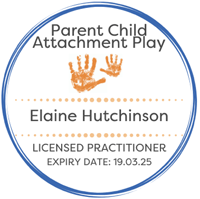Many of us grew up with much loved pets who we went to when life got a bit tough but animal-assisted therapy (AAT) is far more than that simple interaction between a child or teen and a pet. That is a part of it, but in AAT the purpose is to help the child or teen learn to manage the big feelings or stressful situations that brought them to therapy in the first place and the animal is an integral part of what happens next. (I will write about dogs in this article, but there are many types of animals that can work as therapy animals.)
Animal-assisted therapy dates back to 1792 when English Quakers first used animals as part of their mental health treatment for patients, but human-animal interactions began about 14,000 years ago, so we have a long history of sharing our lives with animals, particularly dogs.
Obviously, not everyone likes dogs! If you don’t like dogs, clearly many of these benefits wouldn’t apply, but I have worked with several clients who have been bitten by dogs or are very wary of them and Orca has worked her magic each time.
If you have a child who doesn’t like dogs but would still like to come for therapy, Orca can be out of the room!
18 strange but true benefits of having a dog in the therapy room
- The dog can be as beneficial to the client as the therapist.
- The client relates better to the therapist if there is a dog in the room (even if it is asleep!).
- Having a dog in the room ‘normalises’ the therapy process for the client.
- Dogs make no assumptions about people and this helps the client feel accepted by the therapist as well as the dog.
- The dog both supports the client and often mirrors the client’s moods or behaviours, especially if they are sad or upset.
- The therapeutic process for the client is advanced by having a dog present – in other words it is easier to look at the hard things that brought them to therapy and to work through them with a dog in the room.
- Having a dog in the room allows for positive changes in the client’s brain. Cortisol (a stress hormone) drops in brain when a dog is present, allowing the client to be less stressed/anxious during therapy so that they can engage more fully with the activities.
- A client’s blood pressure and heart rate will lower if a dog is present, making them feel calmer and more at ease.
- The calming effect on the brain of having a dog in the room also benefits everyone else (therapist and parents too).
- A therapy dog can increase a client’s ability to feel safe and trust their own self-reliance.
- A client is more likely to share issues or concerns with a therapist if a dog is present.
- Often clients manage feelings of guilt and shame better (especially around abuse) if a dog is present.
- A dog allows the client to give and receive touch in a safe way.
- Having a dog present reduces hyperactivity for the client (and other conduct disorders).
- Clients are ‘exceptionally responsive to the dog’s involvement in their therapy’ and often ask about the dog if they are not present.
- Clients find the interactive play and ‘petting’ the dog of particular importance.
- Clients demonstrate less anxiety and less interrupted play when a dog is present.
- In a survey 84% of respondents felt that the dog helped with attachment/relationship building and trust building for their child, 58% said the dog made their child feel special and 42% felt the dog helped the child with anxieties, phobias, regulation and new skill empowerment.
Orca at the Studio

At the Studio, Orca spends time with all my clients currently, although if you would prefer that she was out of the room, I can accommodate that too. (If your child is allergic to dogs, I would advise you to see another therapist without a dog.)
Orca greets clients when we first meet, generally outside (weather permitting) and on a lead so that they can meet her from a distance that feels comfortable for them and they can interact with her as much or as little as they like.
Orca is half collie, half miniature poodle and she looks like a little black rug so even clients that are quite little are often drawn to her. If you know the children’s books ‘Hairy Maclary’ then you’ll have ‘met’ an Orca clone… She’s a medium sized dog so doesn’t overwhelm little children but is big enough to be played with safely.
In the Studio, having said ‘Hello’ and done a quick sniff to ‘check for cheese’, Orca will interact with a client if they like, but will ‘go to bed’ if asked and will often just snooze on her bed if we are busy. Sometimes clients will play ball with her, pop bubbles for her, or just ask her to be an audience for what they are doing. (She’s quite a good listener!) Older clients and teens often like quietly fussing her as they talk and often enjoy her head on their knee if they are feeling particularly sad. Clients often like to take charge of her lead as we walk to or from the Studio to meet parents, but they are never left alone with her.
If you have any questions, please feel free to drop me an email:






